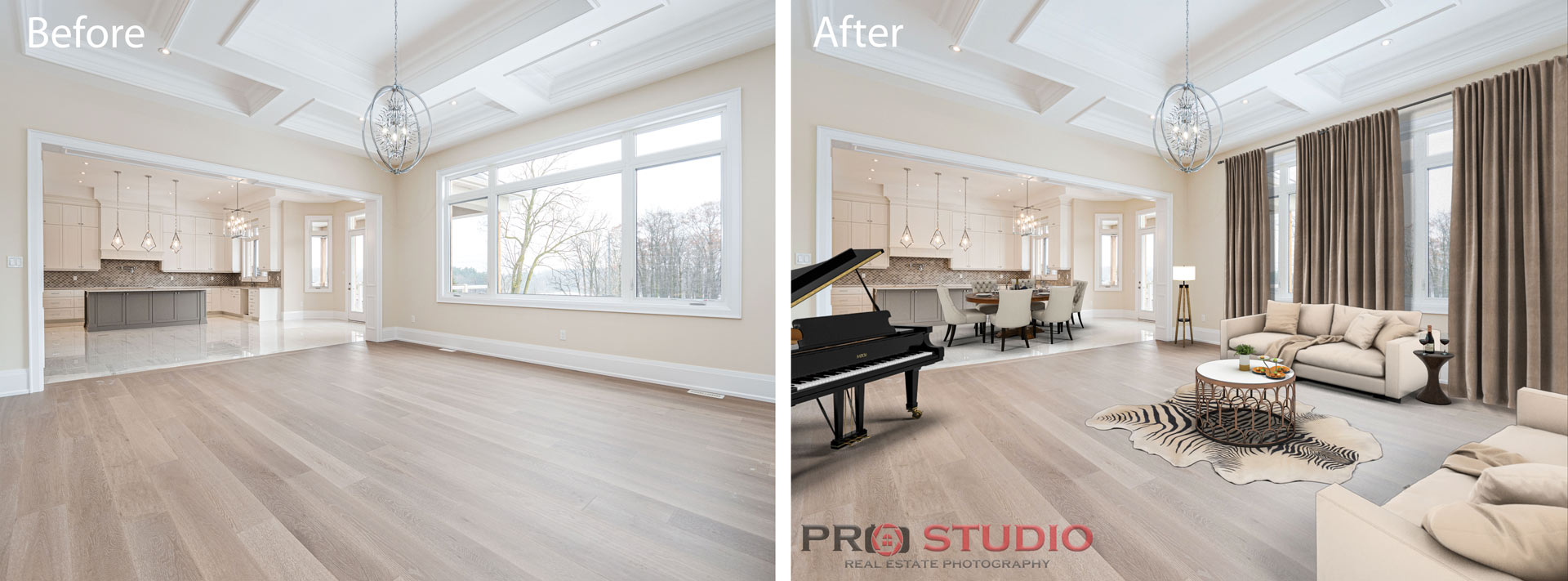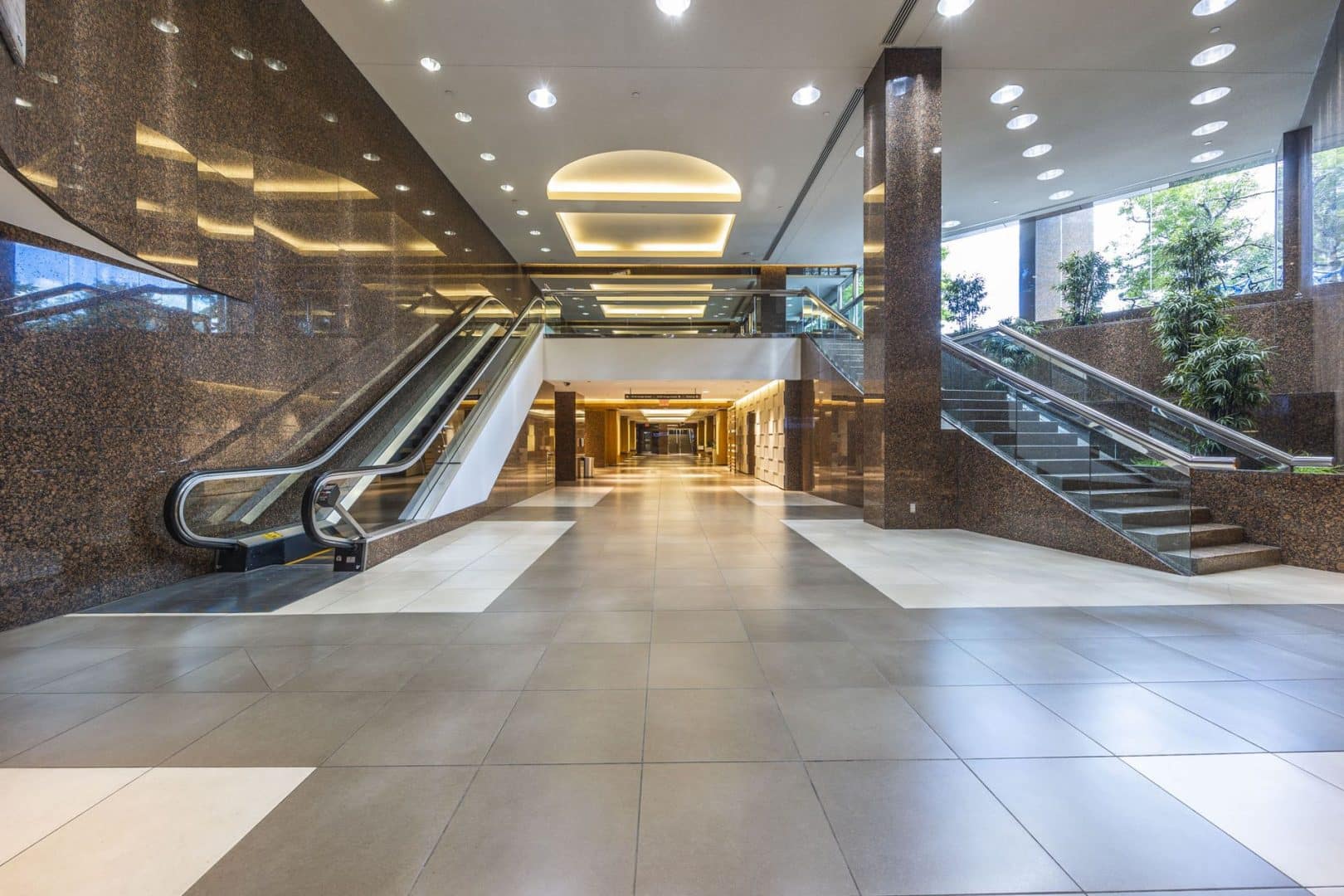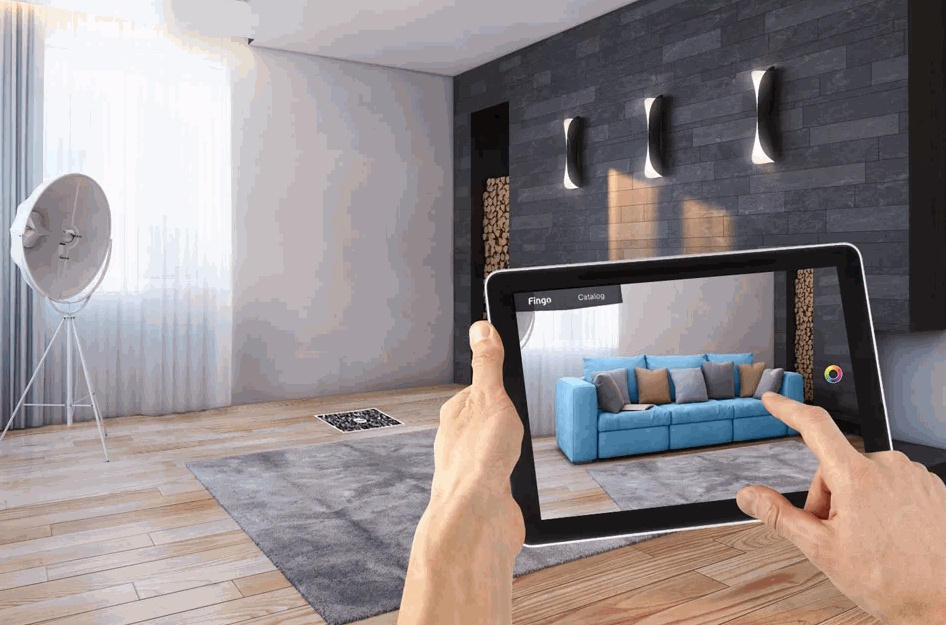In the ever-evolving landscape of real estate marketing, innovation has taken the forefront in captivating potential buyers' attention. Virtual staging, a revolutionary technique that harnesses the power of digital transformation, has emerged as a game-changing tool. By seamlessly blending technology with creativity, virtual staging enhances homes in ways that were once unimaginable. Let's delve into the world of virtual staging, decode its intricacies, and understand how it breathes new life into properties.
The Essence of Virtual Staging
At its core, virtual staging is the art of using advanced software and design techniques to digitally furnish and decorate empty spaces within a property. Imagine an empty room transformed into a cozy living area, complete with tasteful furniture arrangements, artwork, and decor. Virtual staging takes this concept to the next level by providing potential buyers with vivid visuals of a property's potential.
From Blank Canvas to Digital Masterpiece
The process of virtual staging begins with high-quality photographs of the property's empty rooms. Talented designers then step in to work their digital magic. They meticulously select and place furniture, rugs, lighting fixtures, and even plants to craft a captivating scene that showcases the space's functionality and aesthetics. The result is a visual representation that allows potential buyers to envision the possibilities of the space.

Enhancing the Imagination
One of the primary challenges of traditional real estate marketing is helping potential buyers visualize a property's potential. Empty rooms can appear lifeless and uninspiring, making it difficult for buyers to imagine the space's possibilities. Virtual staging effectively addresses this challenge by providing a fully furnished representation of the property. Buyers can now see how each room can be transformed into a comfortable living space, a functional office, or a welcoming bedroom.
Personalization and Adaptability
Every buyer has unique preferences when it comes to interior design and decor. Virtual staging allows for unparalleled personalization and adaptability. Designers can tailor each space to cater to different styles, whether it's contemporary, traditional, minimalistic, or eclectic. This customization resonates with a wider range of potential buyers, making the property more appealing to diverse tastes.
Cost and Time Efficiency
Traditional staging involves the logistics of renting furniture, arranging deliveries, and coordinating setup. These processes not only consume time but also incur costs. Virtual staging, on the other hand, is significantly more efficient. Once the initial setup is complete, virtual staging merely involves adjusting digital elements. This saves valuable time and resources for both real estate agents and potential buyers.
Navigating Ethical Considerations
While virtual staging offers numerous benefits, ethical considerations must be acknowledged. Transparency is crucial to maintaining trust between buyers and sellers. Providing both digitally staged and unaltered photographs ensures that potential buyers are fully aware of the property's current condition. This approach balances the artistry of virtual staging with the responsibility of presenting an accurate portrayal. Commercial photography also adheres to similar ethical principles.
In the realm of commercial photography, accuracy and transparency hold immense importance. Just as in virtual staging, potential clients seeking commercial spaces deserve an authentic representation of what they can expect. The balance between showcasing the property's potential and presenting it truthfully is a delicate one. Just as with virtual staging, commercial photographers aim to capture the essence of a space while accurately depicting its dimensions, lighting, and features.

For businesses seeking office spaces, retail outlets, or venues, commercial photography serves as the initial introduction to potential sites. The photos must not only highlight the visual appeal but also provide an accurate understanding of the layout, ensuring that businesses can make informed decisions. Transparency in commercial photography is akin to the transparency expected in real estate transactions – it fosters trust and confidence in the process.
Beyond Empty Spaces: Virtual Staging's Potential
The application of virtual staging extends beyond vacant properties. It can also be employed to refresh dated interiors, showcasing a property's potential for modernization. Additionally, virtual staging can be used to reimagine spaces for specific purposes, such as turning an extra room into a home office or a gym.
The Future of Real Estate Presentation
As technology continues to advance, the potential of virtual staging is boundless. With the rise of virtual reality (VR) and augmented reality (AR), potential buyers might soon be able to virtually walk through a staged property, enhancing their immersive experience. This could revolutionize the way properties are presented and bought, creating a more interactive and engaging process.
Finally, "Virtual Staging Decoded: Enhancing Homes Through Digital Transformation" demonstrates technology's transformational influence on real estate marketing. Virtual staging reimagines how properties are presented to potential buyers, sparking their imaginations and exhibiting a space's potential in ways never seen before. Virtual staging is a monument to the amazing synergy between technology, creativity, and real estate innovation as the sector enters the digital environment.


No comments yet